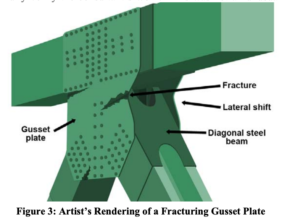Bridge unveilings have been popular dating back to 1866 with the unveiling of the Great Suspension Bridge. One of the latest ribbon cuttings was originally expected in early 2023, yet the Nice-Middleton Bridge was fully opened to the public on October 13, 2022 extending across the Potomac River between Charles Country, MD, and King George County, VA. Not only does the design of this bridge double capacity, but it also represents improvements of safety, enhanced emergency response, and the legacy of our proclivity toward innovation.
We engage with infrastructure wherever we go. Our dependence on roads, bridges, energy, and buildings is inescapable. We sometimes go blind to them, because when infrastructure is working, we simply go about our days. It is only when deficiencies become obvious that questioning attitudes around these basic systems arise. One incident brought about this sort of attention nationally on August 1, 2007.
15 years ago, poor infrastructure shocked the nation when the I-35W bridge near downtown Minneapolis collapsed killing 13 people and injuring 145. During rush hour, 111 motor vehicles stretched across the span of the bridge before descending into the Mississippi River. At 6:05 pm, gusset plates on the south side of the bridge fractured, as explained by NASA’s System Failure Case Studies. It wasn’t until August 6, 2007 – almost a full week later – that the final victim was recovered.
According to the National Transportation Safety Board, initial failure occurred at Node U10. Gusset plates at Node U10 were half an inch thick, nine feet long, and six feet high; they were only half as thick as they should have been. Some were bowed, which further decreased the bridge’s capacity for weight bearing. Moreover, two of the connected members were under compression loading, and the remaining three were under tension loading. Photographs taken in 1999 would later prove that the gusset plates bowed at least 8 years before the collapse. This tragically underscores the importance of regular inspections, but also the importance of taking action.
Three days following the disaster, Congress authorized $250 million for repair and reconstruction, which would be finished the following year. NASA speculated that the original designers failed to exercise quality control to ensure correct calculations for the gusset plates despite State review. Chiefly, inspectors had been labeling the bridge structurally deficient since 1991 meaning 16 years of significant maintenance had been disregarded. However, failing to undertake the maintenance did not deem the bridge unsafe by inspection standards. According to inspector reports since 1994, rust, corrosion, and section loss in the gusset plates were noted but section loss had not been routinely measured. The bridge was allowed to persist without a maintenance overhaul because year-over-year data was not collected and compared, and inspection results were not followed up on.
Several issues led to this tragedy from fundamental design error to oversights in inspection, maintenance delays, and ultimately rush hour traffic. How should this affect America’s views on our country’s bridges and other major infrastructure? Today, more than 40,000 bridges across the United States are deemed structurally deficient, with 42% being more than 50 years old according to Infrastructure Report Card. Will decision makers prioritize these critical infrastructure components, or will another tragedy befall the nation before systemwide infrastructure investments are made?
Written by Andrew Jefferis, Media Coordinator
The Alliance for Innovation and Infrastructure (Aii) is an independent, national research and educational organization. An innovative think tank, Aii explores the intersection of economics, law, and public policy in the areas of climate, damage prevention, energy, infrastructure, innovation, technology, and transportation.
